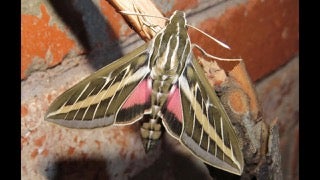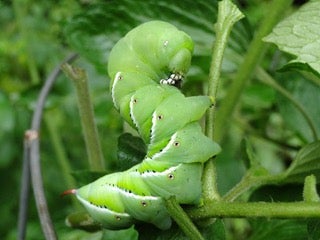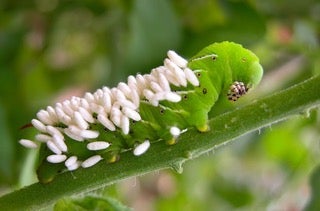Master Gardeners: Tomato Hornworms – Your tomato plants nightmare
Published 12:14 am Saturday, July 18, 2020
|
Getting your Trinity Audio player ready...
|
Texas Certified Master Gardener, Orange County Master Gardeners
Almost every day for the past week or so when I go out to check my tomato plants, I see a new caterpillar munching away on my tomato plants. I thoroughly look them over the day before and don’t see any and lo and behold the next morning there is this big green ugly thing that has stripped all the leaves and some of my tomato stems away. We all have had problems with our tomato plants looking fine one day and the next they are almost stripped bare. This is the work of the Tomato Hornworm It is super destructive to our tomato plants and can hit other plants in the same family such as eggplants, peppers and potatoes. So far, my peppers and eggplants have not been hit affected yet. Being hard to spot as they blend with the foliage of the plant and feed constantly on the leaves and even the fruit. I have found both small ones and huge ones.
The Hornworms live above ground for a short period of time. In late spring, the adult female moth lays eggs on the underside of foliage and they will hatch in about a week. The adult moths are easily recognizable as they are commonly called the sphinx or hummingbird moth.
The caterpillar larvae will hatch in late spring and feed for 4-6 weeks before creating a cocoon and overwintering in their pupal state in the soil. If the weather is warm enough the larvae may only burrow for as little as 2-3 weeks.
Moths will emerge in spring and then lay eggs starting the cycle all over again. In warm climates, like ours, it is possible to have two generations in a year.
Hornworms can get up to 5 inches long. The ones on my plants are about 3 inches long and that is more than enough for me. The larval stage or what we consider the caterpillar stage is when they do the most damage to our plants. They are pale green with white and black markings, plus they have a horn-like protrusion stemming from their rear. They also have 8 “V” shaped stripes along its green body. Don’t worry, they do not sting or bite so they are not dangerous to humans only plants.
What to look for:
- They start their feeding at the top of the plant, so each day, look for chewed or missing leaves. If you spot any, start looking for the culprit.
- Look on the top of your tomato leaves for dark green or black droppings, if you see any, start looking for this little creature.
- If any leaves or stems are wilted or hanging down, you may find white cocoons and their nests nearby.
- If you see holes in leaves and severe defoliation, devoured flowers, and/or scarring on fruit surfaces, look for these green scary creatures.
Control and Prevention
- Handpicking is the best elimination for these critters. Yes, I know they are yucky so put on gloves and crush them unless you are squeamish then drop them in a bucket of soapy water. Better yet, if you have chickens, feed them to the chicks, they will love you for it.
- If the population of hornworms is very large or you have a large garden, then you might opt for insecticides such at Bt, (Bacillus thuringienisis). It is a stomach poison to the Hornworm once ingested. And it is organic!
- Insecticidal soaps will also kill Hornworms but the pest needs to come in direct contact with the product.
- Till your soil at the beginning and end of each gardening season to destroy any overwintering larvae, this should get about 90% of the larvae.
- There are beneficial insects which feed on Hornworms which act as a biological control. Parasitic wasps will lay her eggs on the back of the Hornworm and when they hatch, they feed on the Hornworm thus killing it. So if you see something that looks like little grains of rice on the back of a Hornworm, do not destroy it, move it safely far away and let the little baby wasps do their thing. (see picture)
- Try interplanting dill, basil or marigolds as companion plants with your tomatoes. Hopefully, this will help keep them away. I have dill, marigolds and basil by my tomatoes but I am still getting these little monsters.
For any of your horticultural questions contact our Hot-Line Tuesday and Thursdays 10 a.m.-2 p.m. at 409 882-7070 or thru our website https://txmg.org/orange Contact or Facebook page Orange County Texas Master Gardeners and we will get back with you.









